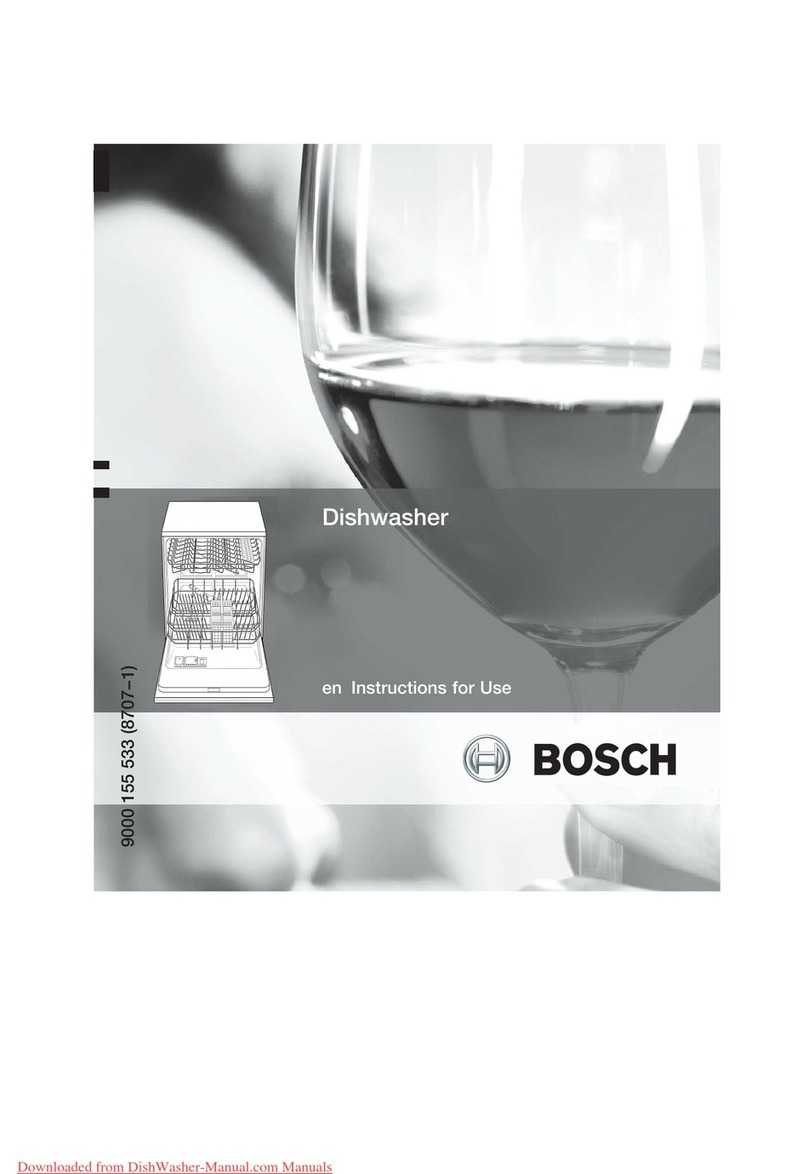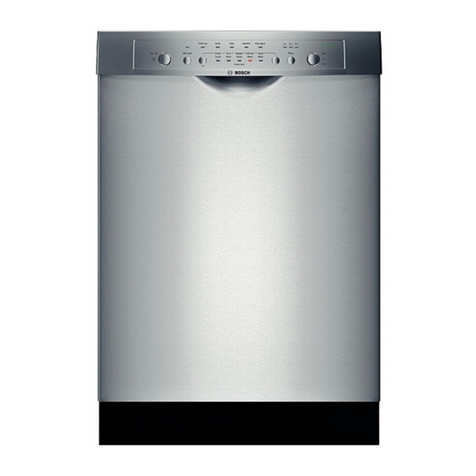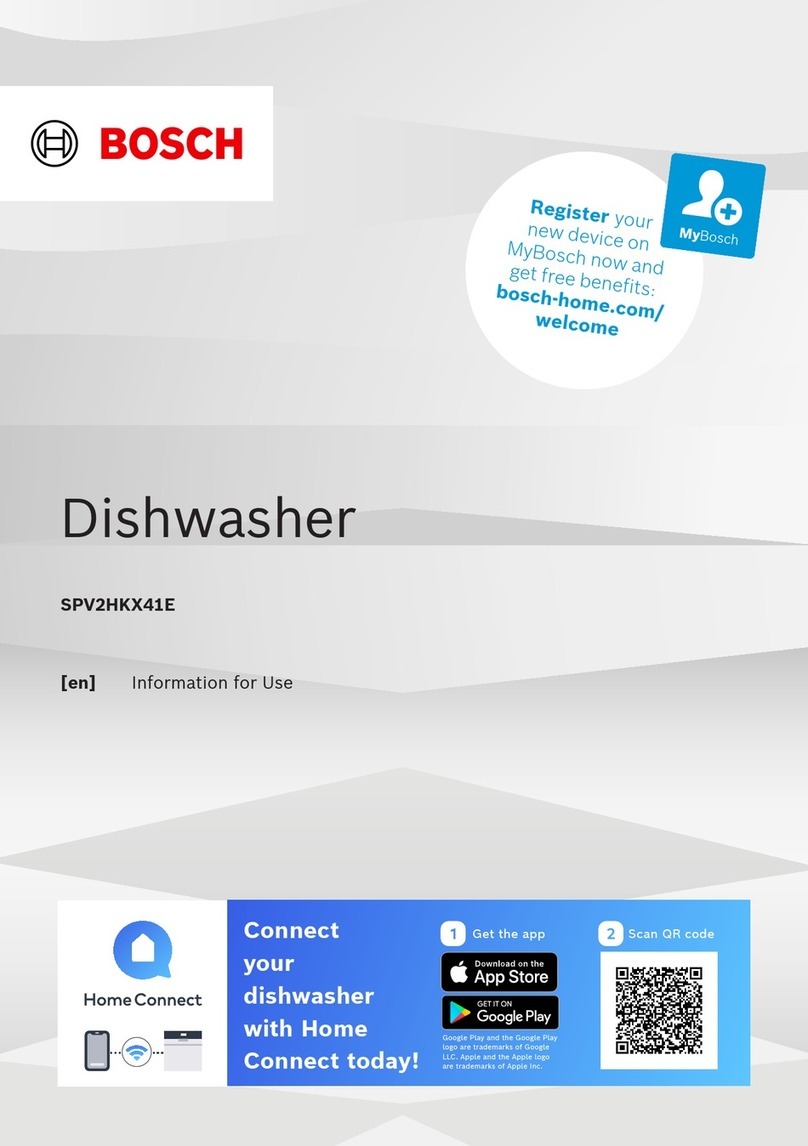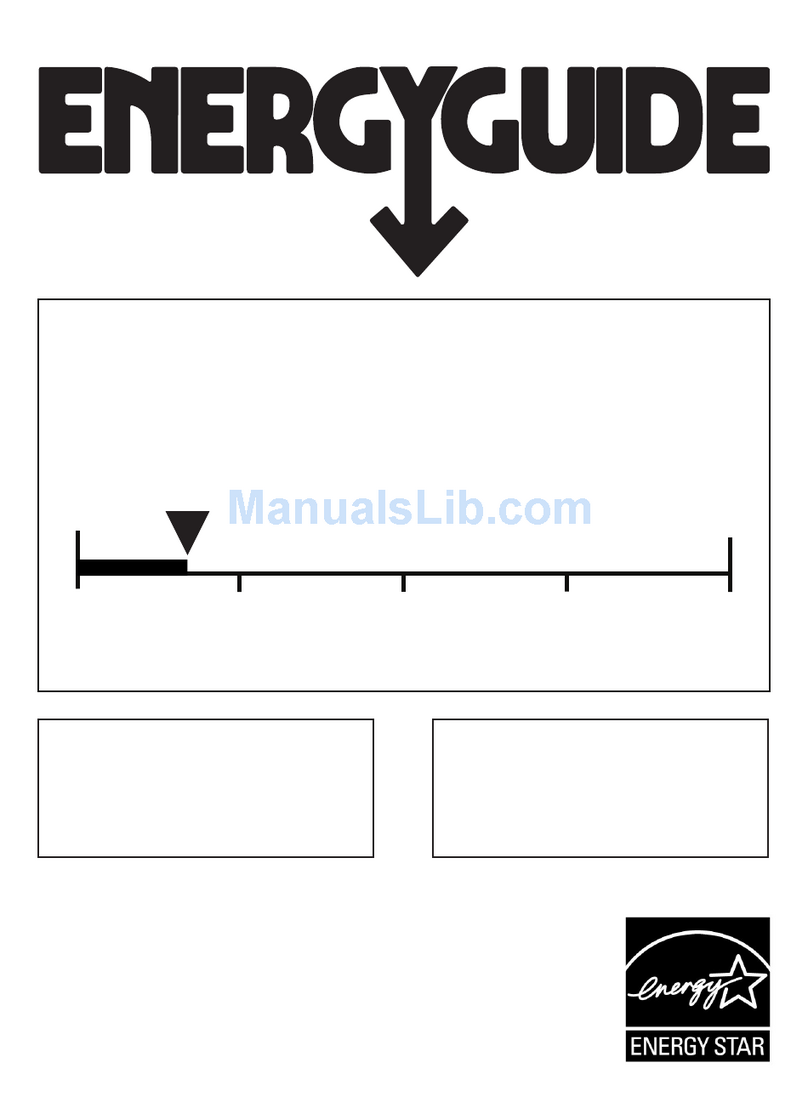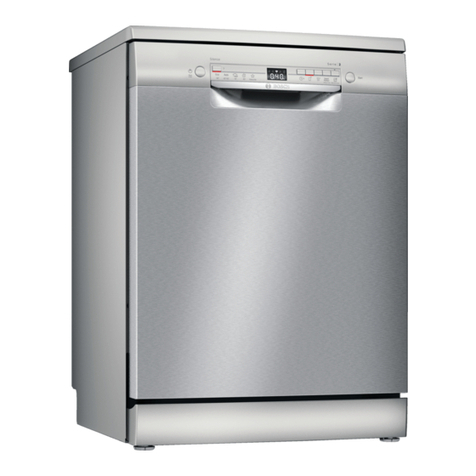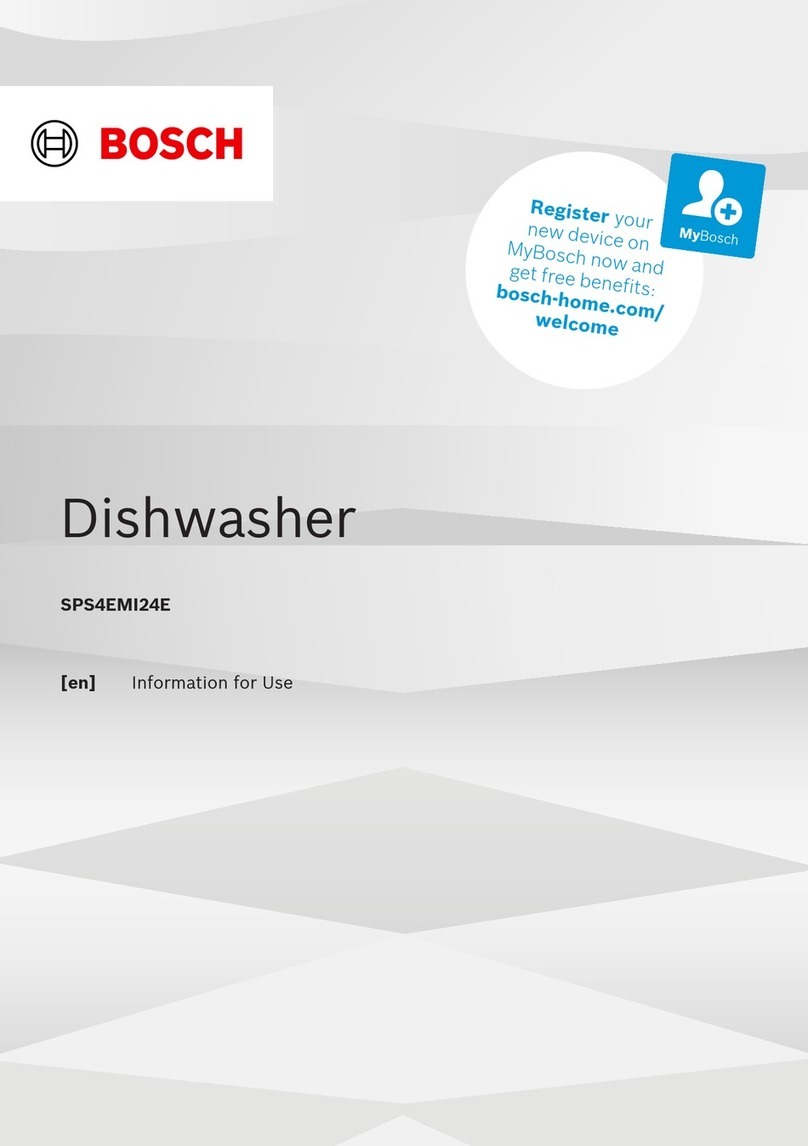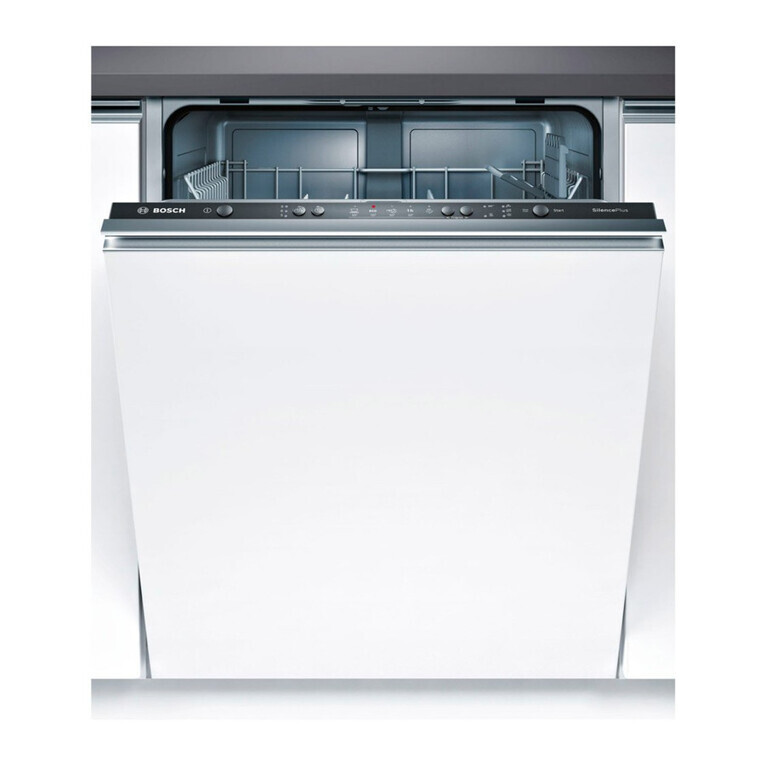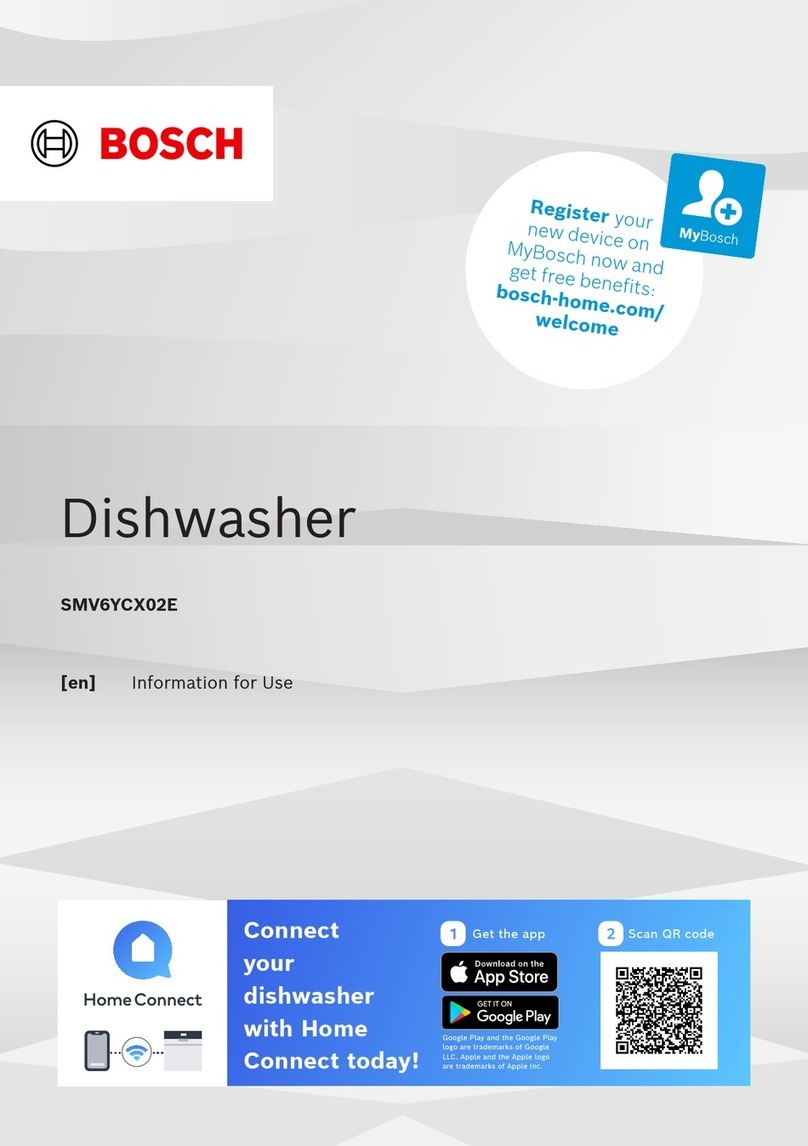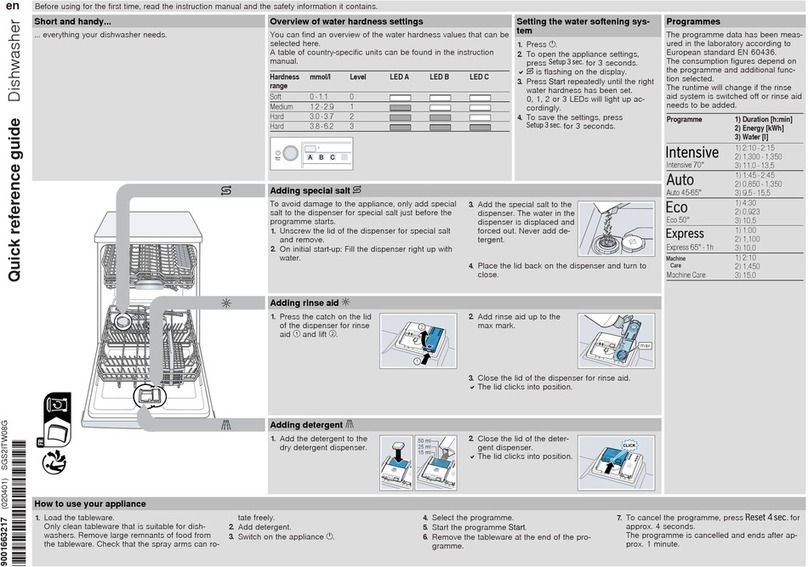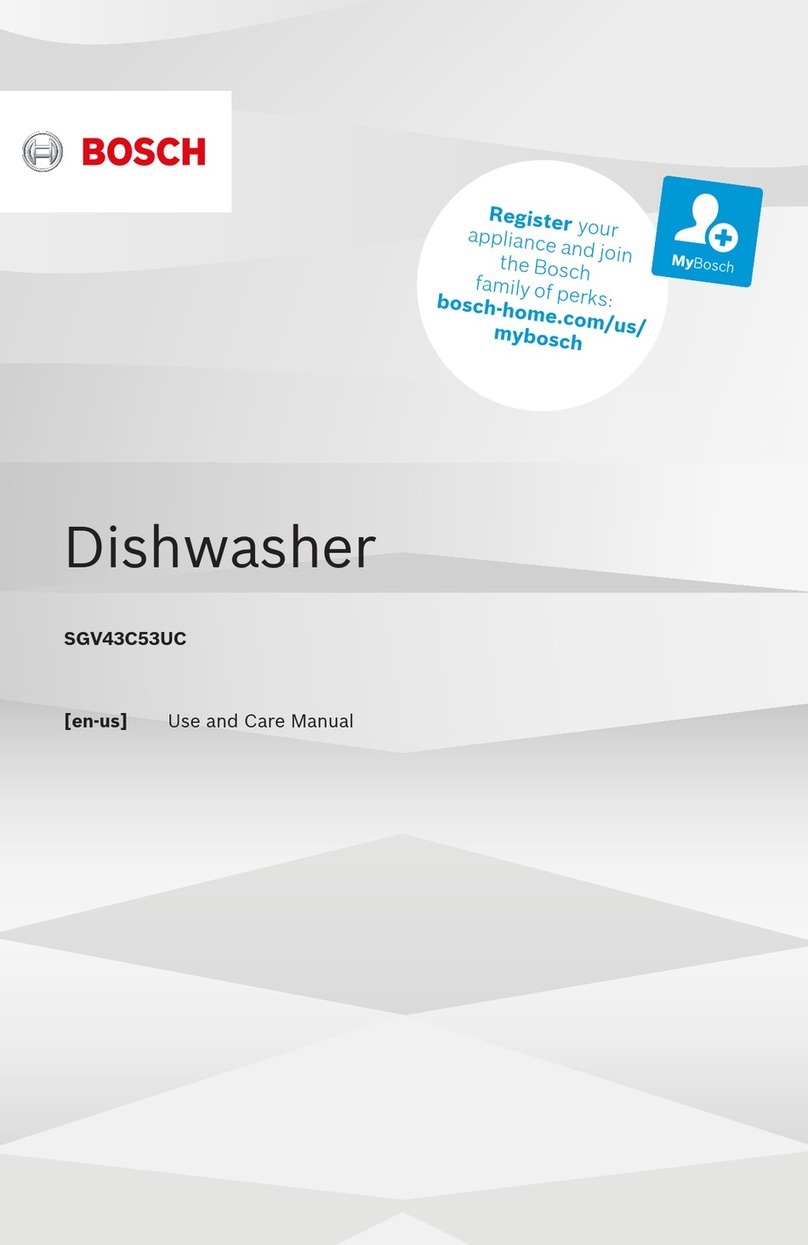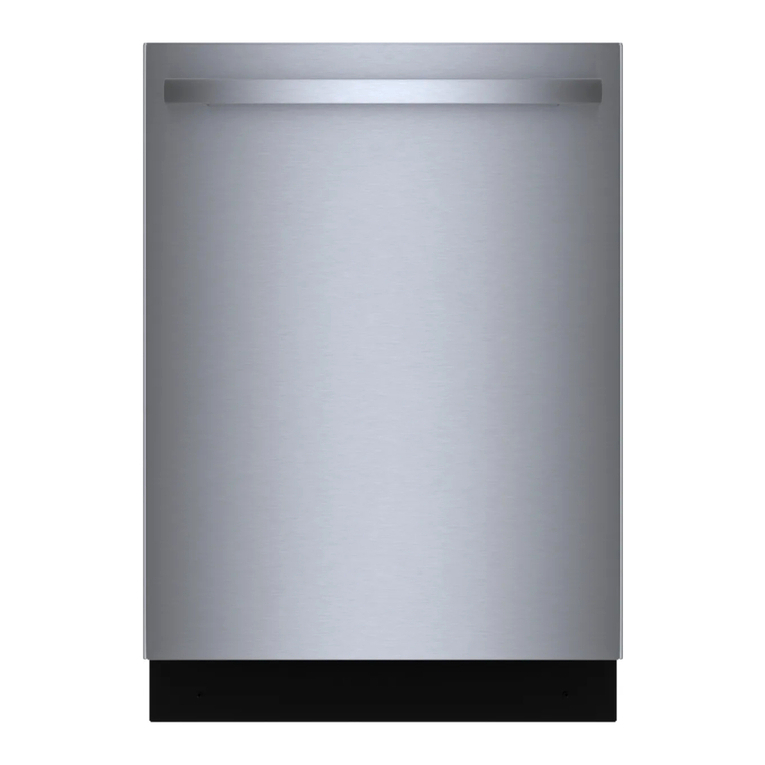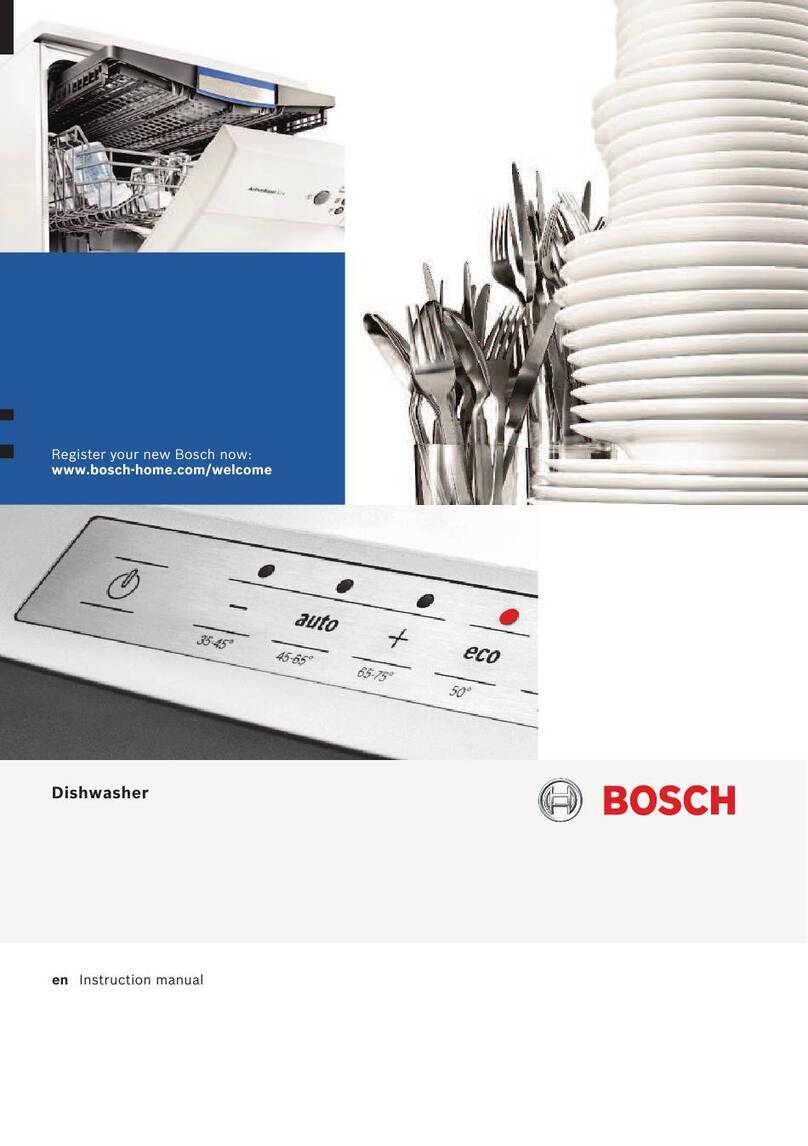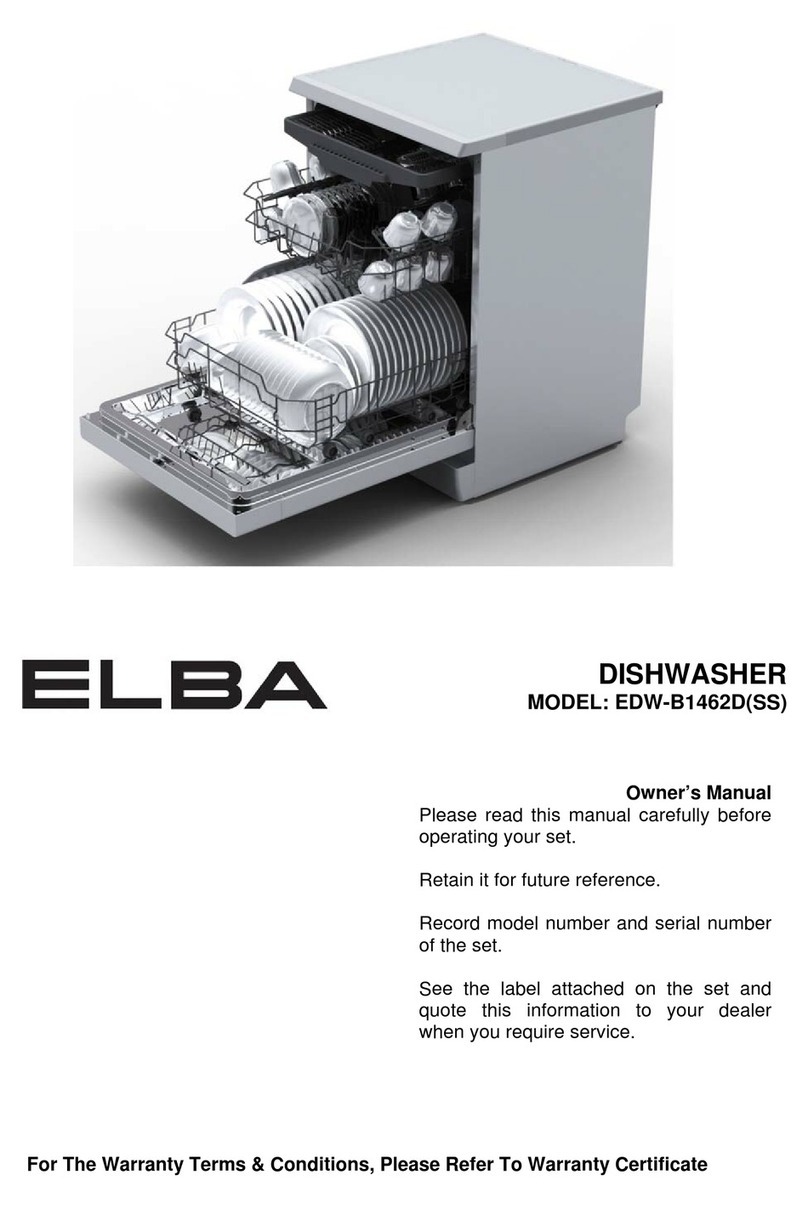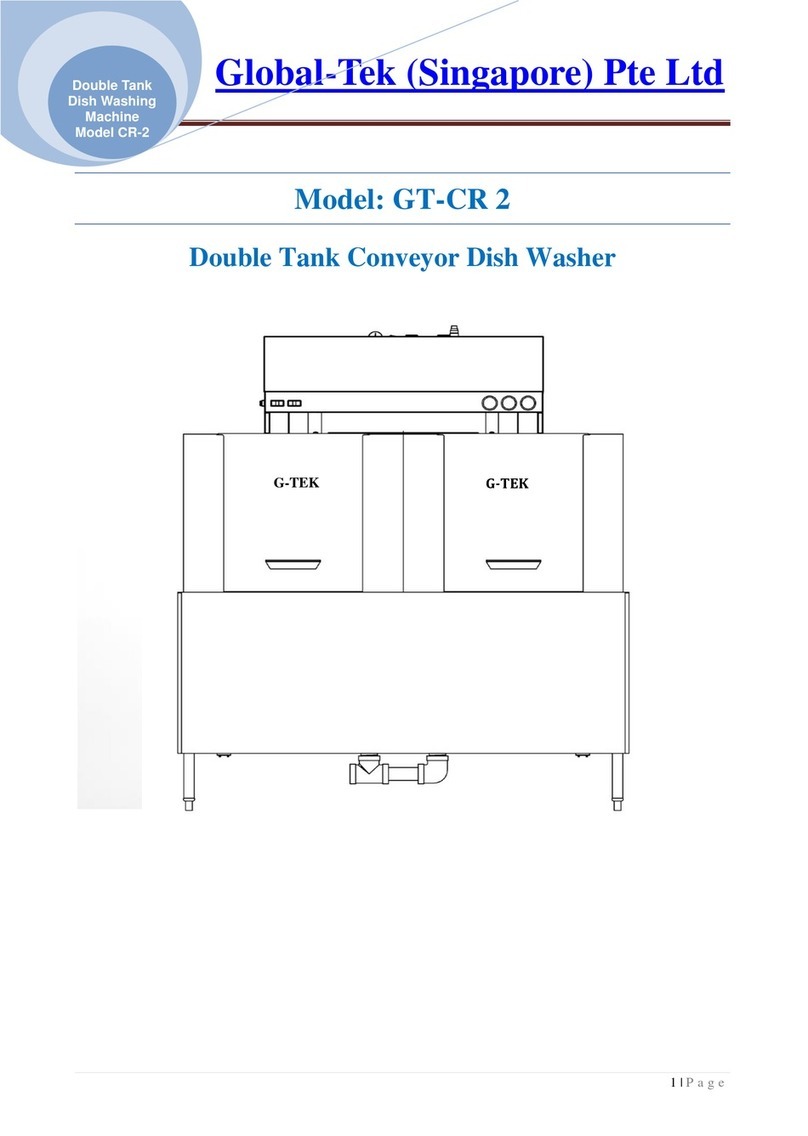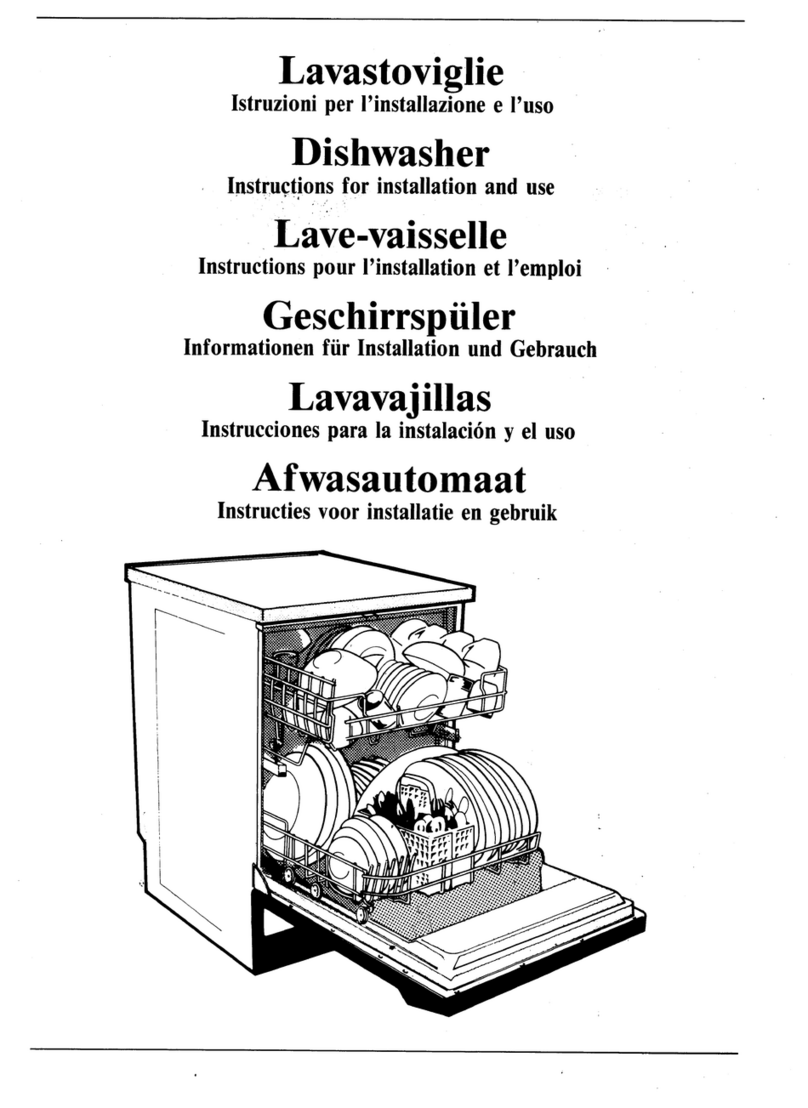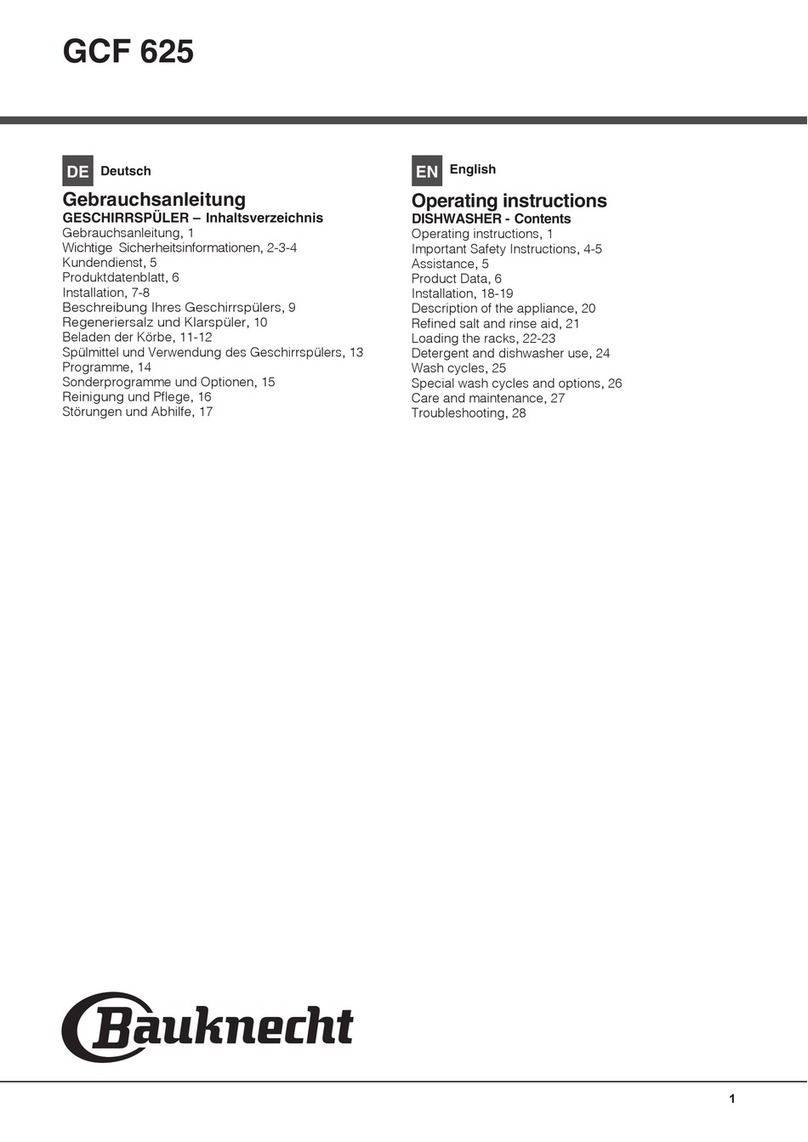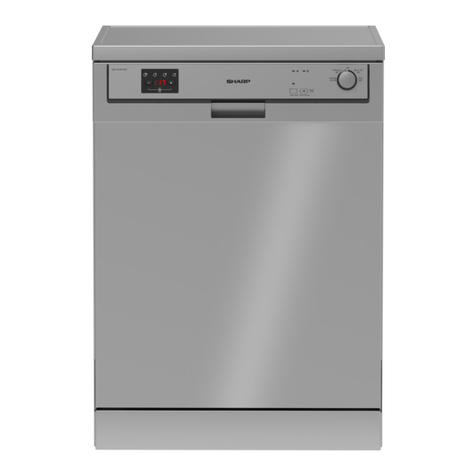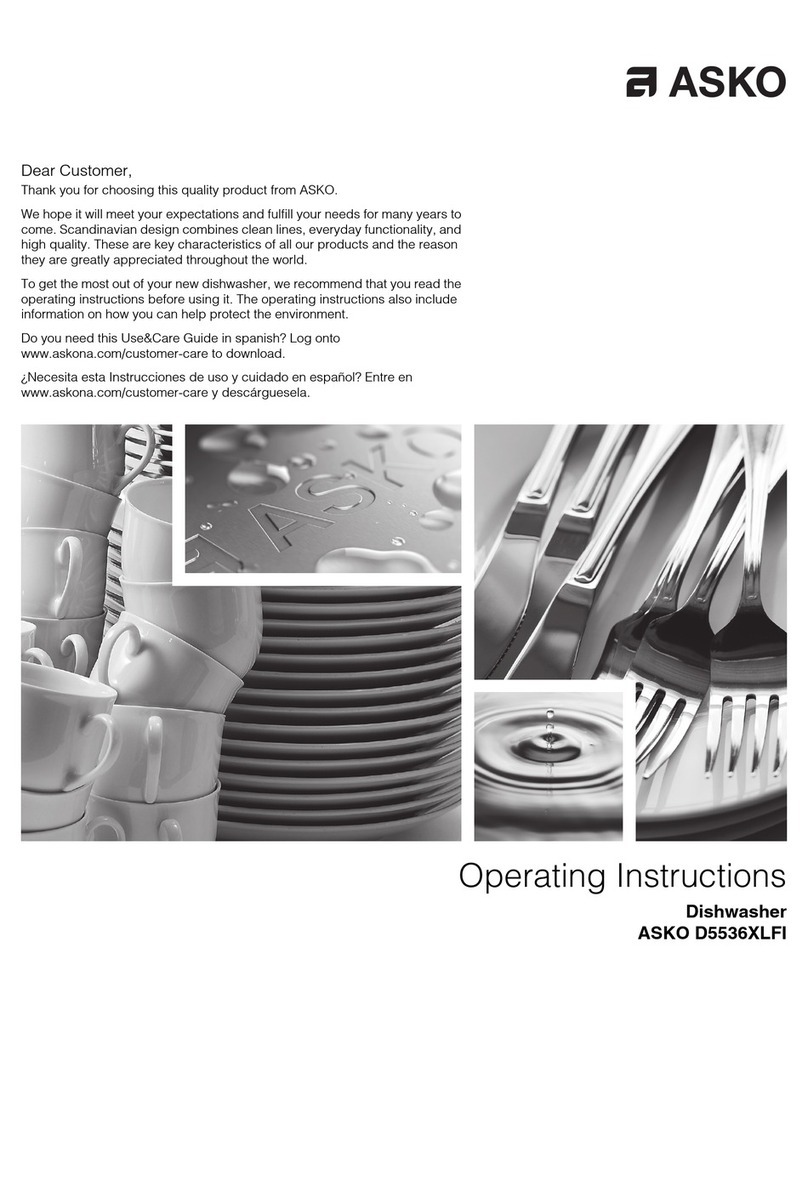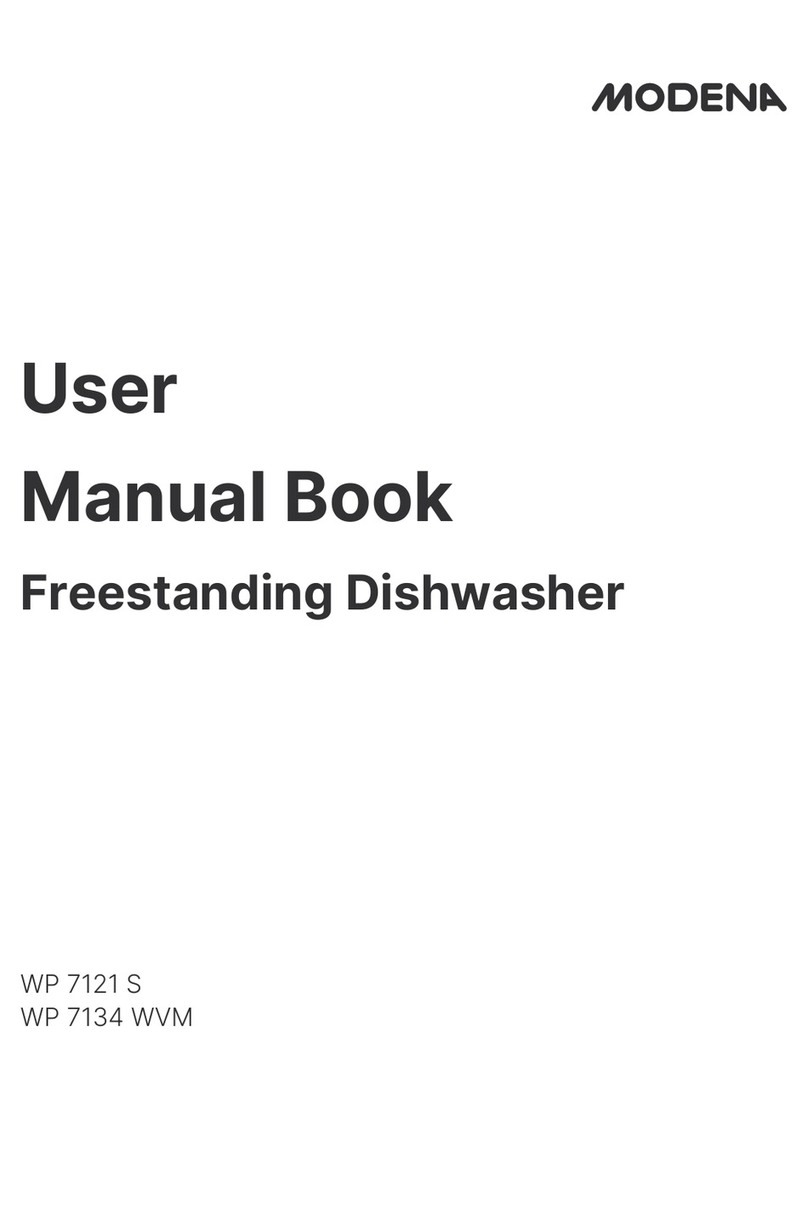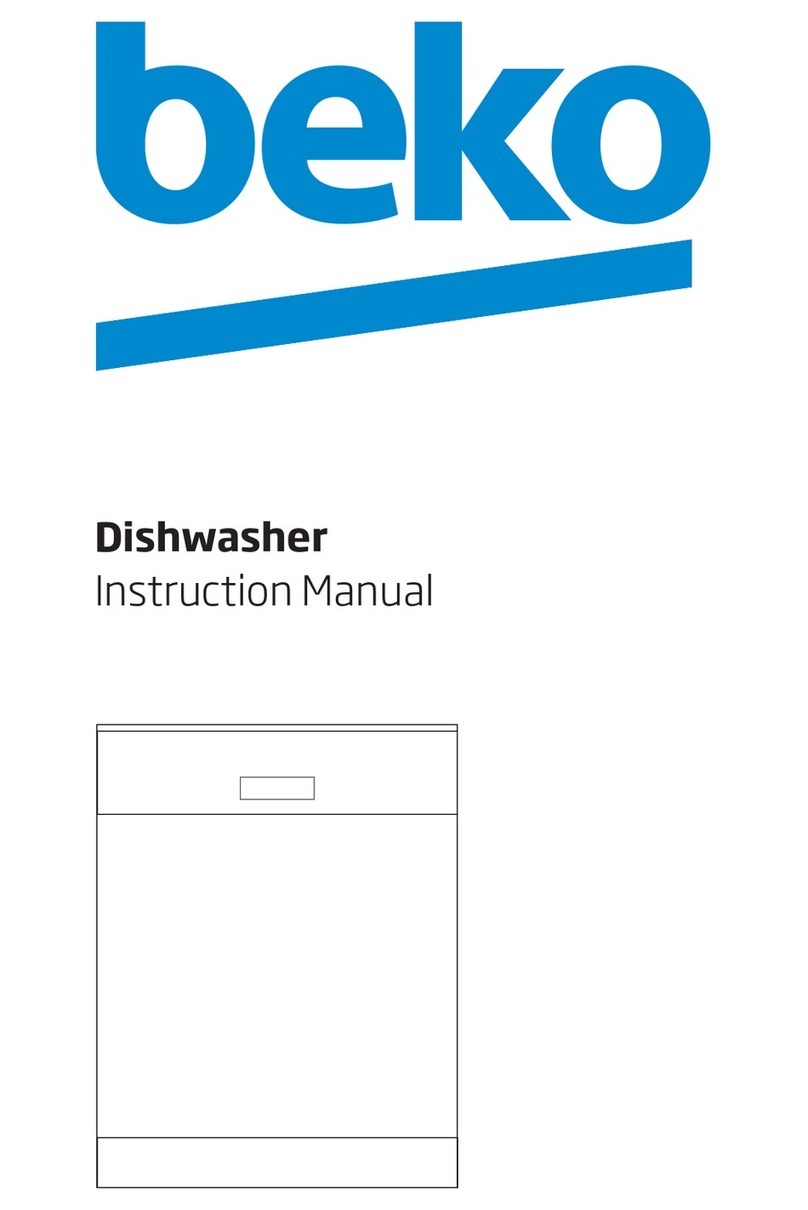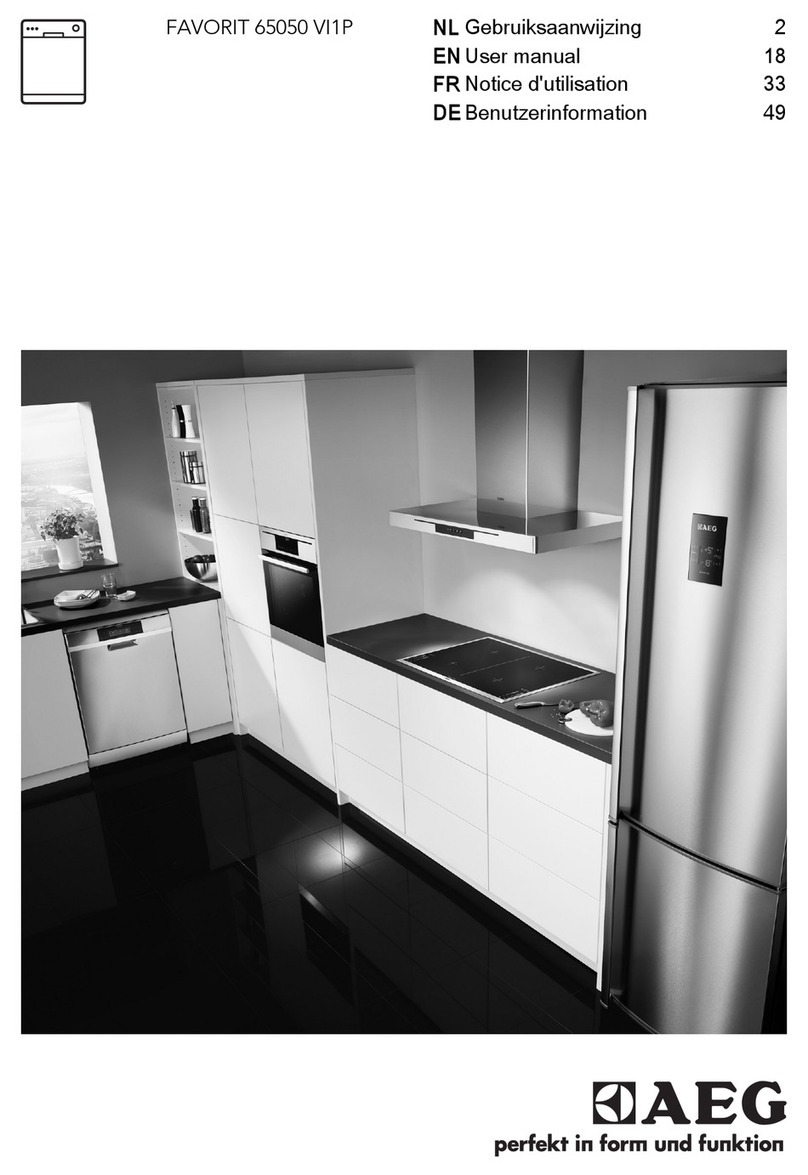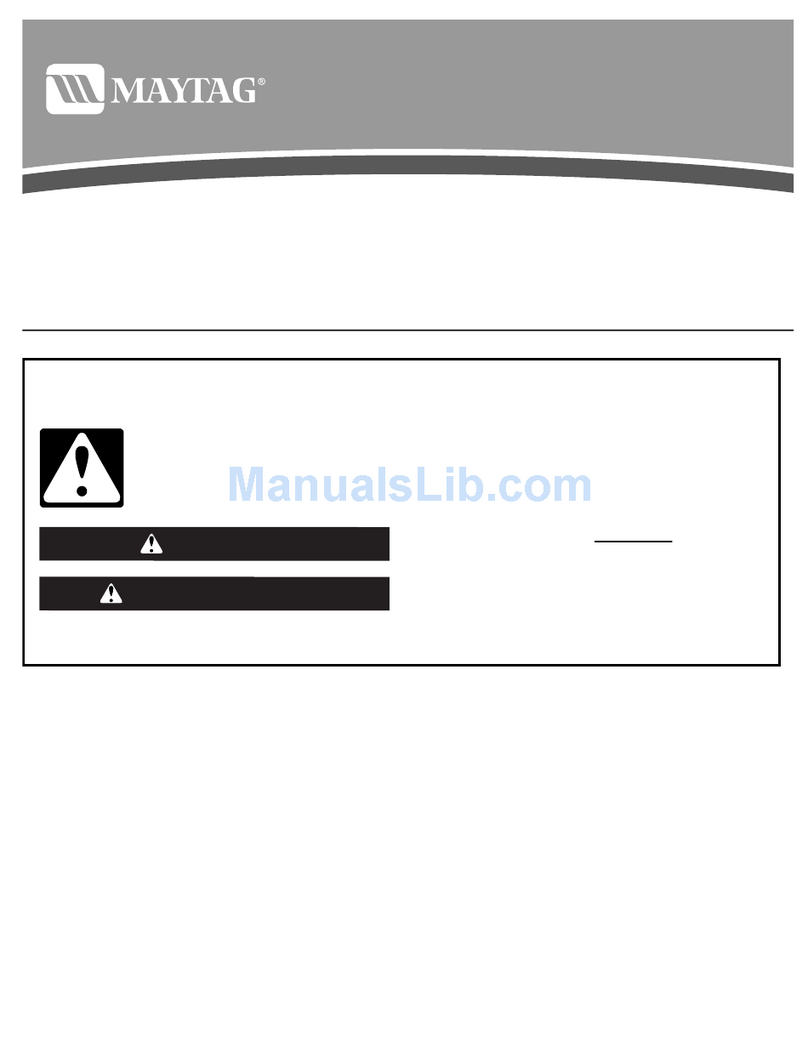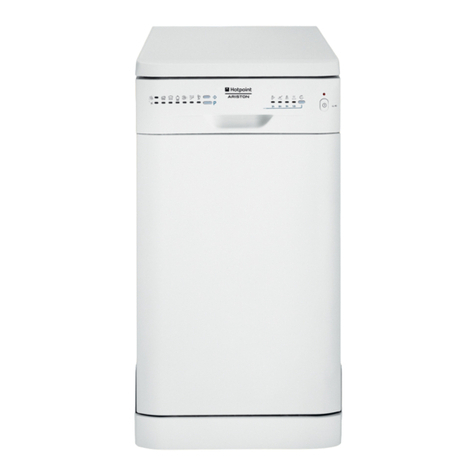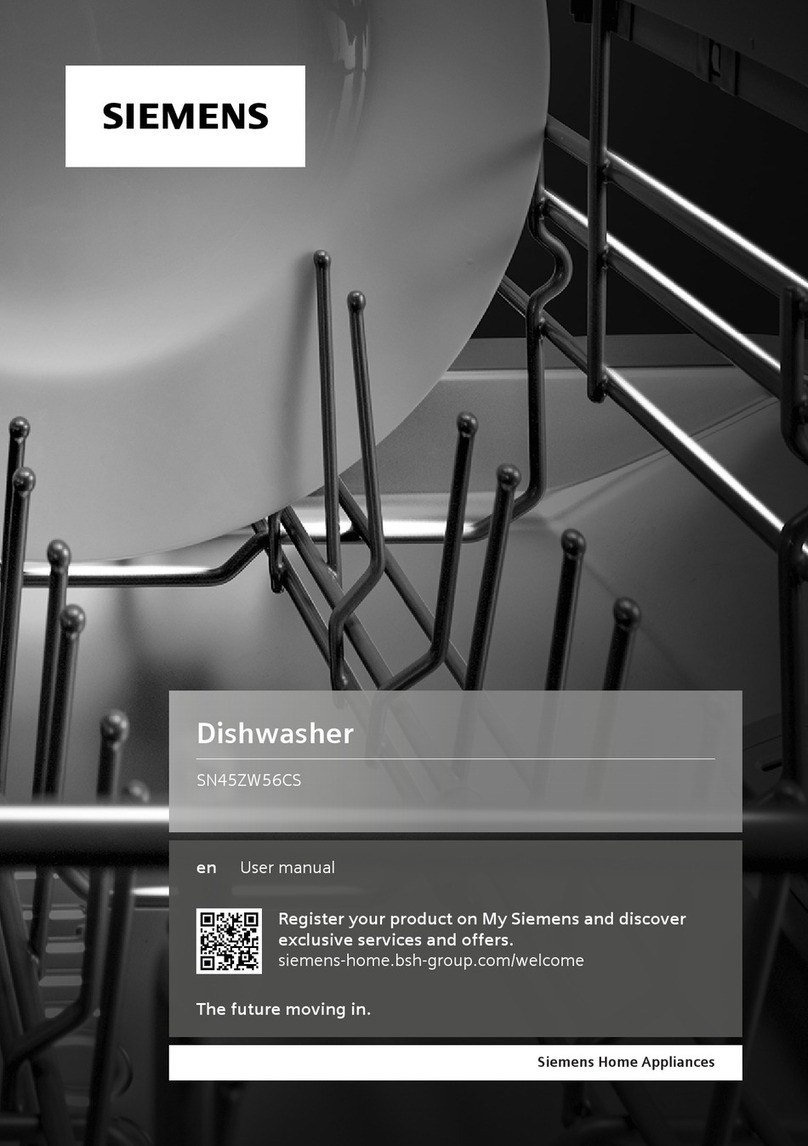
@
Self-help
Problem
Pilot lamp
does not come on
Machine does not start
Machine stays
on pre-rinse cycle
Water not pumped away
Cleaner lid will not close
Lower spray arm
rotates with difficulty
White deposits
left on dishes
Streaks on glassware
Utensils still wet
after drying cycle
Rattling noises
Unsatisfactory
washing results.
26
Possible cause
-The main switch has not been turned.
-Plug
not
properly
inserted in socket.
-Fuse blown
or
circuit breaker
tripped
in house.
-Machine
door
not properly
clos~d.
-Water tap not on.
-Filter
clogged
in inlet water hose.
-
Kink
in drain hose.
-Filter clogged.
(Check coarse and fine filters Fig. @).
-Programme is not completely _finished.
-Pull off and clean spray arm.
Clean also spray arm mounting.
-Incorrect amount of detergent
or
rinse-aid.
-No granular salts in the water softener.
-The lid of the granular salt storage container
was not securely screwed on.
-Too much rinse-aid.
-Too little rinse-aid.
-Utensils not properly arranged.
-Incorrect amount of detergent
or
rinse-aid.
-Programme selector turned
accidentelly
after filling
detergent container.
This releases detergent too soon.
-Utensils
incorrectly
arranged
or
rack overloaded.
-Spray-arm rotation
obstructed
by
utensils.
-Coarse
or
fine filter clogged (Fig.@).
-Microfilter clogged (Fig. @).
(If needed remove
and
clean them.
Be sure the microfilter
clicks
securely
back
into place).
-Filters not properly fitted into position.
-Clogged nozzles in spray-arm.
-Unsuitable programme selected.
Notes
1.
The
dishwasher has been
thoroughly tested at the factory.
A few small water spots may remain.
They will disappear with the first use.
2.
If
your dishwasher
is
a especially designed
model for installation uder a worktop
(built-in model), but will be used as
a free standing unit with a supplementary
worktop, it must be secured so as not
to tip over.
It
can
be
secured to the wall
or adjacent kitchen unit.
3.
Disconnecting appliance.
-Pull out the plug.
-Turn off water tap.
-Detach hoses from tap
and drainage pipe.
-Unscrew mounting screws
under the work plate.
-Dismount base plate, if present.
-Pull appliance out,
so that the hoses drag behind.
4.
To transport appliance, ensure
that
it is
placed
either
in upward position
or
flat on
its back.
If
transported otherwise,
any
residual
water
found in the appliance may
get
to
the
control
units and adversely influence
the
functioning of the programmes.
5.
For comparative purposes only.
Arrangement according to:
IEC
436
Capacity:
12
place-settings
Arrangement example:
Fig.
'Ill
and~
Comparative programme: Normal
65°
Amount of dish-washing cleanser used
in
the test-study: 25
g.
G.
Interference suppression:
Interference suppression
as
established
by
the
87
/308/EWG
regulations.
7.
Only for U.K.
Electrical requirements
Check that the voltage stamped
on
the
rating plate which you will find under the
table top when you open the door
corresponds with your house electricity
supply which must
be
a.
c.
(alternating
current). Your machine
is
already fitted with
a plug incorporating a
13
A fuse.
If
it does
not fit your socket the plug should be cut off
from the mains lead and
an
appropriate plug
fitted. Throw away the cut off plug, do not
insert it
in
a
13
A socket elsewhere
in
the
house
as
this could cause a shock hazard.
@
Warning-
this appliance must be earthed.
Important
The wires in the
mai,ns
lead are coloured
in
accordance with the following code:
Green and
yellow-
Earth;
Blue-
Neutral;
Brown-
Live
If
you fit your own plug the colours of the wires
in
the mains lead of your machine may not
correspond with the markings identifying the ·
terminals
in
your plug
in
which case proceed '
as
follows:
The wire which
is
coloured green and yellow
must be connected to the terminal
in
the plug
which is marked with the letter
E,
or by the
earth symbol (
c?)
or
coloured green, or green
and yellow.
The wire which
is
coloured blue must be
connected to the terminal which
is
marked
with the letter
N,
or coloured black.
The
wire which
is
coloured brown must be
connected to the terminal which
is
marked
with the letter
L,
or coloured
red.
With
alternative plugs a
15
A fuse must be
fitted either in the plug or adaptor
or
in
the
main fuse box.
In
the event of replacing a fuse
in
the plug supplied a 13A
ASTA
approved
fuse to
BS
1362 must be fitted.
If
the plug
is
the moulded on type the fuse
cover must be refitted when changing the fuse.
In
the event of losing the fuse cover, the plug
must no be used until a replacement fuse
cover has been obtained and fitted. A new fuse
cover can be obtained from your nearest
Service Office or local Electricity Board.
The
colour of the correct replacement fuse cover
is
that of the coloured marks or insert
in
the
base of the plug.
Replacement of the mains lead
If
it
is
necessary to replace the mains lead for
any reason (which should be only with another
of a suitable type) proceed
as
follows after
removing the plug from the socket.
Noting the positions of lockwashers and
differing type screws remove the plinth plate
and removing 4 screws. Remove the inner
insulating panel by removing the 2 screws and
slide it to the right to clear the slots. Slacken
the screw
in
the rear cable clamp.
Note routeing of cable, disconnect from
terminal block noting the position of the brown
(L) and blue
(N)
wires and earth point and
withdraw. Complete fitting of new cable by
reversing above steps.
27



